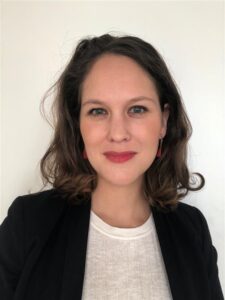A picture says a thousand words. And for our team on the ground, those words hold the power to transform the way we approach our work. At EWB Australia, collecting quantitative data is an essential part of our monitoring and evaluation process. We rely on numbers to help us understand the effectiveness of a project, yet figure-driven data can leave out important information contextualising the impact of a project or program. Which is why, in 2023, EWB incorporated “photovoice” into the team’s monitoring and evaluation toolkit.
Photovoice is a qualitative participatory research method that empowers community members to document and reflect upon their lived experience through photography. It was pioneered by researchers in 1992 as a tool to collect stories from women living in villages in the rural Yunnan province of China. The researchers asked the women to share their lived experience by taking photographs in their communities and then writing a reflection to accompany each photo. Their reflections were then shared with policy makers seeking insight about the community’s needs.
By centering community members’ voices and expertise in their lived experiences, photovoice improves the quality of collected data by reducing potential bias imparted by data collectors external to the community. Today, photovoice can be used either as a tool for intervention or as a monitoring, evaluation and learning (MEL) tool to provide feedback and to reflect upon a specific project.
Photovoice is implemented through five steps:
1) Recruit participants
- This is usually a diverse group of people from the target community impacted by the project or project stakeholders.
2) Orient participants
- Provide a specific prompt relevant to what is being investigated to guide participants.
3) Create images
- Equip participants with knowledge of photography and smartphone camera use to elicit quality photographs.
4) Interpret images
- Facilitate reflections from participants about their captured photographs with guided questions to provide insight into their perspectives.
5) Utilise photo-stories
- Advocate for positive change and improve programs with the resultant photo-stories.

Dr Jess MacArthur
The introduction of photovoice at EWB was facilitated by Dr Jess MacArthur, an expert in qualitative research and a background in chemical engineering. As part of her PhD studies with the Institute for Sustainable Futures at the University of Technology Sydney, Jess created the qualKit, a curated set of qualitative MEL tools designed for gender equality and social inclusion programs. Jess now works as a research and learning adviser with Pro-Wash and Scale and as an adjunct fellow at the Institute for Sustainable Futures in monitoring and evaluation of water and sanitation programming. After being approached by EWB, Jess generously volunteered her time and expertise to train EWB’s Engineering team on photovoice.
The photos produced using photovoice may not make for visually striking images but they can powerfully advocate for positive change and amplify the voices of local community members. “It’s not necessarily about the quality of the photo, it’s more about what the photo is representing,” said Jess.
As part of the Cambodian team’s photovoice training, they conducted photovoice in Ankaol village in Kep province as an intervention tool to identify the different community experiences relating to open defecation. While the challenges regarding women’s safety around accessing sanitation is well documented, the use of photovoice brought to light the challenges associated with unsafe access to sanitation as a result of wet weather, particularly for elderly residents or people living with a disability. The training itself was also an eye-opening experience for the team. When given the photovoice prompt, they found themselves seeing the community (a community they had visited numerous times) in a new light.
Photovoice “opens the net to capture things that we normally don’t think about,” explained Jess. When participants of different demographic groups (such as women and men) are given the same prompt, there is a plethora of research showing that they produce very different images, demonstrating the value of documenting diverse community perspectives. “Each person coming to the same topic will create an image that’s very different … which is very valuable – seeing what they highlight and what’s important to them,” said Jess.
Throughout the training process, the team learnt important considerations around the implementation of photovoice, such as partnering with community members to ensure prompts are culturally sensitive. While photovoice can be a tool to rebalance power, it is important to consider that the photovoice process can also be a barrier to participants who have low digital literacy. Spending time to equip participants with the skills and knowledge to document their stories is essential to ensure ethical data collection.
The addition of photovoice to EWB’s MEL toolkit will enable the team to strengthen their data collection processes and inform learnings. Capturing diverse perspectives through the power of imagery will complement the collection of quantitative data and allow EWB to continue to learn from our successes and challenges.
EWB would like to thank Dr Jess MacArthur for her generosity in volunteering her expertise and time to train the international teams and facilitate the use of photovoice at EWB.
Interested in volunteering your skills and expertise with EWB? Take a look at our current volunteer opportunities. You can also get in touch with us at info@ewb.org.au.


